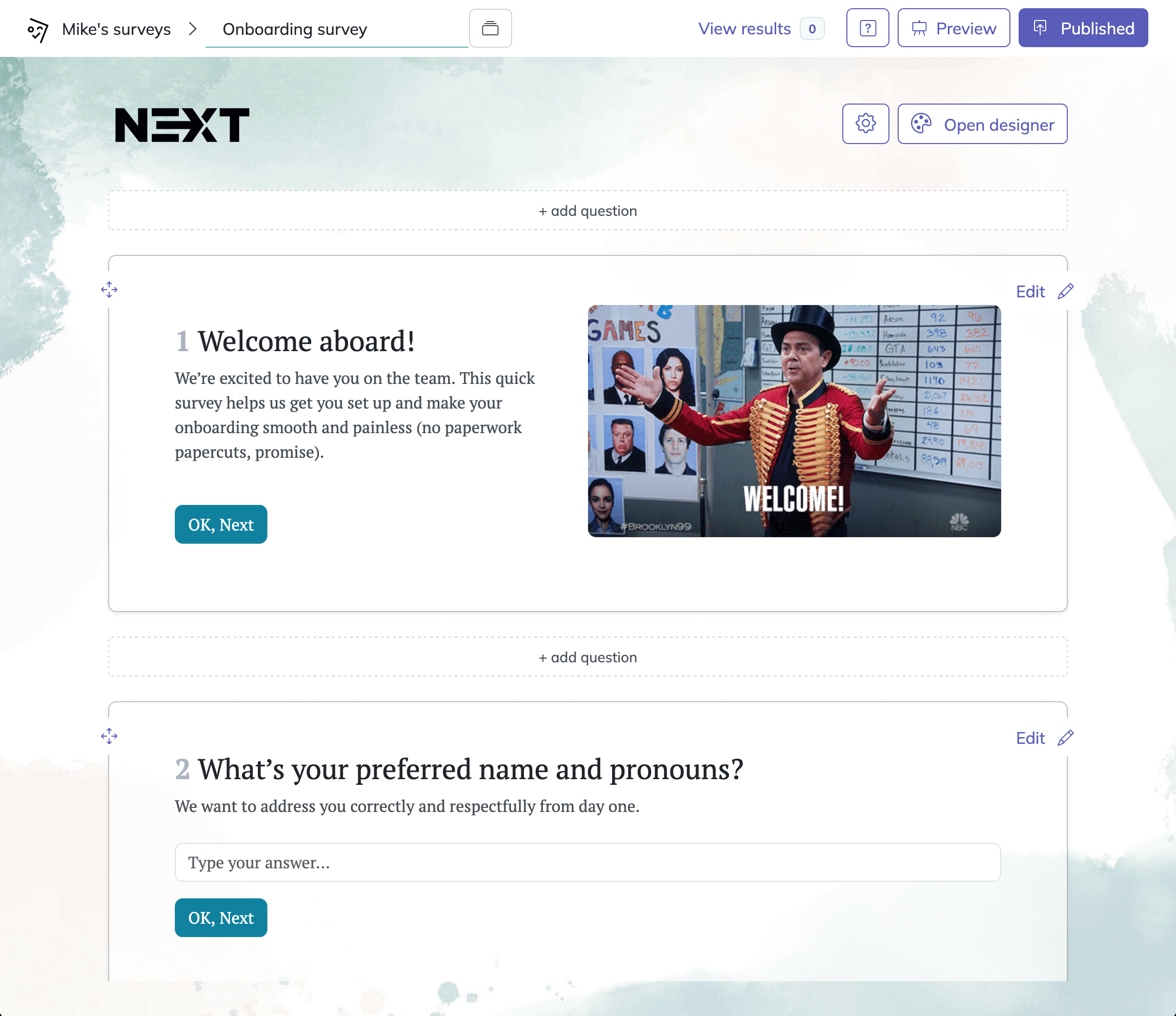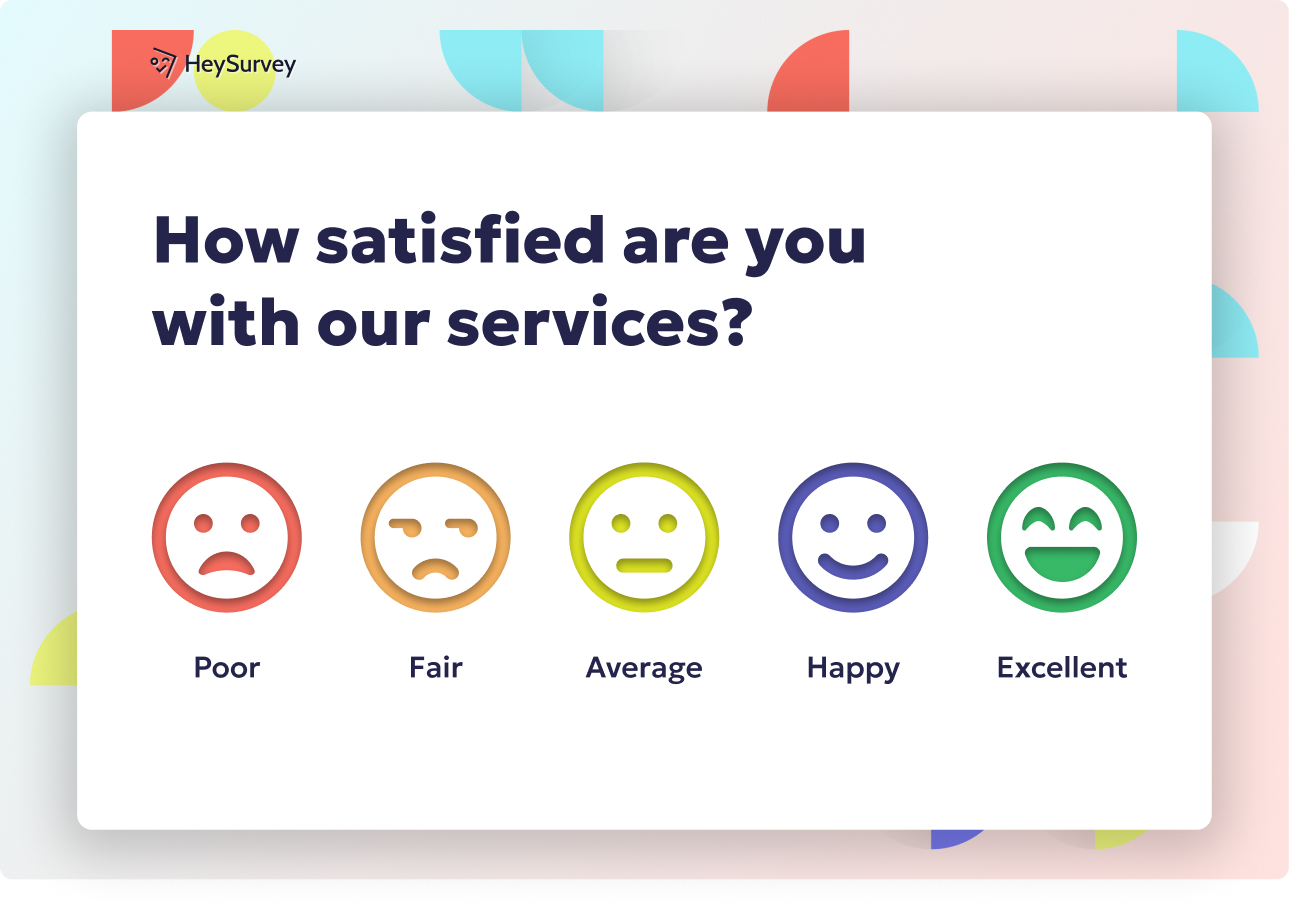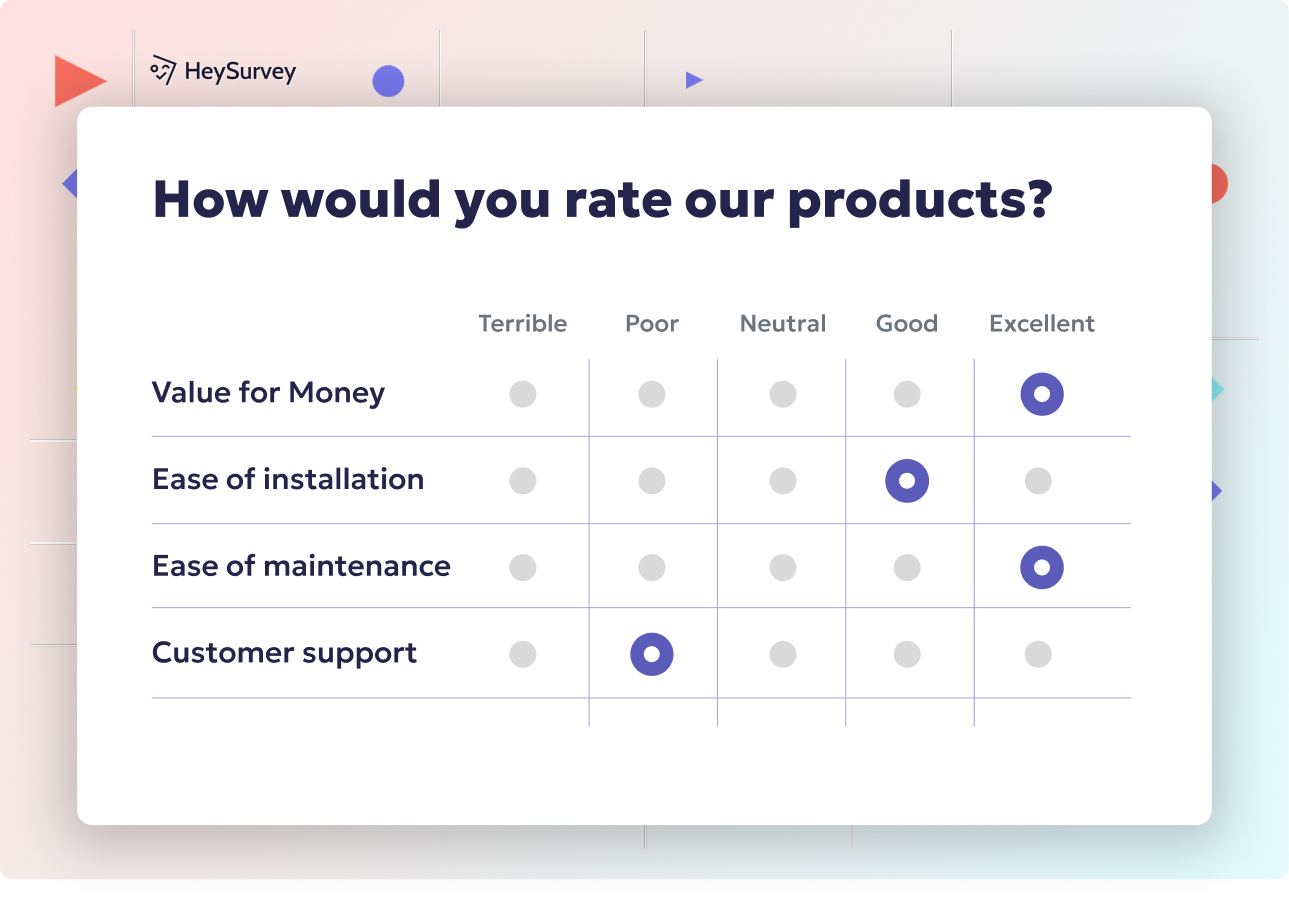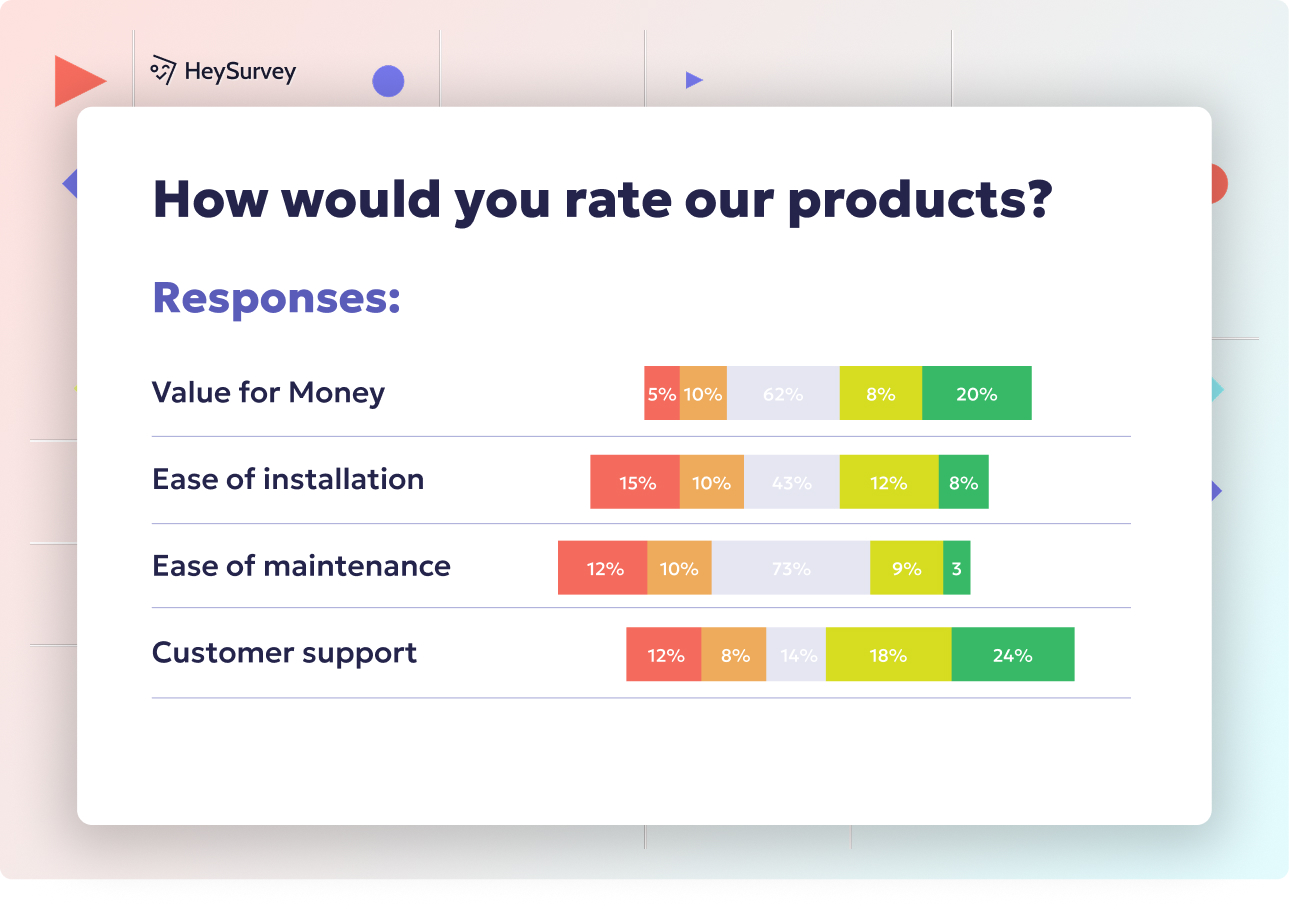32 Likert Scale Survey Questions Examples: Ultimate Guide
Discover 25+ Likert scale survey questions examples and expert tips for crafting powerful, data-driven questionnaires that capture true insights.
Crafting great surveys is both an art and a science, and nothing captures opinions quite like a well-balanced Likert scale. Whether you want to gauge agreement, satisfaction, or frequency, these trusty rating scales make data-driven decision-making a breeze. If you've ever scratched your head about how to phrase the perfect question—rest easy. By the end of this guide, you'll be a Likert scale survey superstar (plus, you’ll get plenty of juicy examples to copy and paste).
Understanding the Likert Scale: Definition & Core Structure
What is a Likert Scale?
The Likert scale is the gold standard for capturing people’s attitudes, perceptions, and feelings using a simple response continuum. Developed in the 1930s by psychologist Rensis Likert, this attitudinal scale collects graded responses to statements—like “Strongly Agree” to “Strongly Disagree.” The magic of the Likert scale? It transforms subjective feelings into reliable, quantifiable data.
The Core Structure: Anchors, Points, and Balance
Every Likert scale runs on a symmetric continuum, keeping both ends balanced for clarity. On one end, you’ll find positive anchors (“Totally Satisfied”), and on the other, negatives (“Not At All Satisfied”). The core of a Likert rating scale includes:
- A statement respondents evaluate.
- A fixed set of ordered response options—usually 3, 5, 7, or even 11 points.
- A neutral midpoint (like “Neither Agree nor Disagree”), giving fence-sitters a comfy place to land.
Why do we call it a point scale? That’s because each response holds numeric value, ideal for statistical number crunching. You may hear Likert scales referred to as rating scales, attitudinal scales, or even a survey continuum—they’re all pointing to the same trusty tool.
Why is the Likert Scale Beloved?
People love how straightforward and flexible the Likert scale is. You can ask about emotions, frequency, satisfaction—almost anything under the sun. Plus, the consistency in the response options means results are easier to analyze and compare.
- The scale structure caters to nuanced data without overcomplicating your survey.
- A defined set of answers simplifies interpretation for both survey creators and respondents.
- Its roots in social science research give it academic credibility (and nerd street cred).
If you want a versatile and reliable way to measure what people really think, the Likert scale will not let you down.
Research indicates that using a 5-point Likert scale effectively captures nuanced customer satisfaction levels, balancing simplicity and depth in survey responses. (surveymonkey.com)

How to Create Your Likert Scale Survey with HeySurvey in 3 Easy Steps
Creating a Likert scale survey with HeySurvey is a breeze, even if you’ve never touched the platform before. Follow these three simple steps to get your questionnaire up and running quickly—and then check out some bonus tips to polish it off like a pro!
Step 1: Create a New Survey
- Head over to the HeySurvey homepage and click Create Survey.
- Choose whether you want to start with a blank survey, pick a pre-built template (great for Likert scales!), or try the text input creation if you prefer typing questions out first.
- Give your survey a name to keep things organized. This name only appears internally, so feel free to be creative or practical.
And voilà! You’ve got a fresh canvas ready for your brilliant questions.
Step 2: Add Your Likert Scale Questions
- Click the Add Question button—either at the top or in between existing questions.
- Select the Scale question type to pull in Likert-style responses.
- Enter your question text—remember to keep it clear and focused on one idea!
- Set the number of points (3, 5, 7, or 11) depending on the granularity you want, and label your scale anchors like “Strongly Agree” and “Strongly Disagree.”
- Mark the question as required if you want to make sure respondents don’t skip it.
- Repeat the process to add more agreement, satisfaction, importance, or frequency style questions as needed.
Each question card is fully customizable, and hey—if you love a question, just duplicate it to speed things up!
Step 3: Publish Your Survey
- When your Likert scale questions are all lined up and polished, hit the Preview button to see your survey exactly as your participants will.
- Make any last tweaks—design and clarity go hand in hand!
- Finally, click Publish. At this stage, HeySurvey will ask you to log in or create an account if you haven’t already.
- Once live, grab your shareable survey link or embed code to spread the word far and wide.
Your data will start rolling in as respondents click through your carefully crafted scales. Ready for analysis!
Bonus Steps to Take Your Survey to the Next Level
Apply Branding
Upload your company logo or personal brand to the survey header through the Branding section. This builds trust and makes your survey instantly recognizable.Define Survey Settings
Customize the survey’s availability by setting start and end dates, limit the number of responses, or create a thank-you redirect URL for better respondent experience.Use Branching
If you want a personalized respondent journey, HeySurvey lets you add branching logic: tailor the next question based on answers. This keeps surveys relevant and engaging, reducing dropout rates.
Now that you know the roadmap, dive in and start creating powerful, insightful Likert scale surveys with HeySurvey. Ready to skip the build and jump straight into action? Just hit the template button below and get going!
Choosing the Right Likert Point Scale (3- vs 5- vs 7- vs 11-Point)
Size Really Does Matter: Which Point Scale Wins?
You might be wondering, “Is five better than three? Is seven too much?” Picking the right number of points is a balancing act between detail and simplicity. Each point scale type comes with its flair—and its flaws.
3-Point Likert Scale
A 3-point scale keeps things ultra-simple: usually “Agree,” “Neutral,” and “Disagree.” Use this for:
- When respondents need clarity and brevity.
- Young participants or situations where time is tight.
- Surveys where detail is less important than general feel.
Drawback? Limited nuance. If you want subtle shades of opinion, three may be too blunt.
5-Point Likert Scale
The 5-point scale is the crowd favorite. It snaps opinions into “Strongly Agree,” “Agree,” “Neutral,” “Disagree,” and “Strongly Disagree.” Why is it a classic?
- Perfect sweet spot between granularity and simplicity.
- Reduces respondent fatigue—nobody gets lost or overwhelmed.
It’s universally accepted for everything from training feedback to customer surveys.
7-Point and 11-Point Likert Scales
Need to capture shades of nuance? Go deep with a 7-point or 11-point scale. These offer:
- Greater sensitivity—find micro-shifts in opinion.
- Better for advanced academic or psychometric research.
Remember, more points also mean more choices. If your respondents aren’t detail-loving, lengthy scales can lead to survey fatigue or hasty answers.
How Do You Choose?
Focus on your research goals:
- For quick insights or young audiences, use 3- or 5-point scales.
- For complex attitudes or statistical analysis, 7- or 11-point scales are your friends.
- Think about respondent fatigue: More points can mean more effort.
Whatever you pick, prioritize clarity and usability for higher response and better data quality.
Research indicates that 5- to 7-point Likert scales are generally optimal, balancing detail and respondent ease. (taso.org.uk)
Agreement Likert Scale Questions
Why and When to Use the Agreement Scale
Agreement scales shine when you want to gauge how much your audience agrees or disagrees with a statement. They’re perfect for sniffing out perceptions, beliefs, or approval of statements about almost anything.
- Use in employee engagement to discover if teams feel recognized or aligned with company values.
- Ideal for brand perception surveys, revealing how much people believe a certain attribute about your product.
- In social research, agreement statements quickly tap into public sentiment about policies, norms, or behaviors.
Agreement scales are a go-to tool because people can relate to terms like “agree” and “disagree”—no confusing jargon, just direct, honest feedback.
Sample Agreement Questions
“I feel valued for the work I do at this company.”
“The product’s user interface is intuitive.”
“Environmental sustainability is important to me when choosing a brand.”
“Remote meetings are as productive as in-person meetings.”
“I would recommend this university to prospective students.”
Each of these captures a single opinion and works beautifully with a classic 5-point scale. Try using agreement questions in annual reviews, policy studies, and market research to unlock deeper insights.
Satisfaction Likert Scale Questions
Why and When to Use the Satisfaction Scale
When you want to find out if people love, hate, or feel “meh” about an experience, call in the satisfaction scale. This point scale is your best friend for measuring contentment across touchpoints—like customer service, events, or new hires’ onboarding.
- Essential for customer experience (CX) teams seeking instant feedback on journeys and moments that matter.
- An underlying tool for Net Promoter Score (NPS) follow-ups—“What made you give that score?”
- Post-event feedback relies on these to know what wowed (or bored) the crowd.
A satisfaction scale spells out clearly where things are amazing and where you might need to sprinkle some magic dust.
Sample Satisfaction Questions
“How satisfied are you with the checkout process on our website?”
“Rate your overall satisfaction with the hotel cleanliness.”
“How satisfied were you with the onboarding training you received?”
“Please indicate your satisfaction with our customer support response time.”
“Overall, how satisfied are you with your current healthcare plan?”
These questions keep it focused on a specific experience, making it easy for respondents to score their level of happiness. Use satisfaction scales after every major event, product launch, or interaction for immediate, actionable insights.
Research indicates that using an odd number of response options in Likert scales, such as 5 or 7, enhances data quality by providing a clear midpoint and reducing respondent confusion. (surveylegend.com)
Importance Likert Scale Questions
Why and When to Use the Importance Scale
If you want people to vote on what matters most, look no further than the importance scale. These point scales uncover which features, benefits, or values your audience actually cares about—pure research gold for prioritizing and smarter resource allocation.
- Pinpoint which features to build first in product development; no more guessing games!
- Super useful for strategic planning, helping you focus on what actually moves the needle.
- Valuable in feature ranking, highlighting what your market can’t live without.
These questions dig below the surface and identify the top priorities straight from your users’ mouths.
Sample Importance Questions
“How important is mobile app security to you?”
“Rate the importance of price when purchasing organic food.”
“How important is flexible scheduling in your decision to accept a job offer?”
“Please indicate the importance of eco-friendly packaging.”
“How important is instructor feedback in your online learning experience?”
When you want your product roadmap or policy draft to reflect what people really care about, the importance scale is the only way.
Frequency Likert Scale Questions
Why and When to Use the Frequency Scale
Sometimes, you’re less interested in “what” and more curious about “how often.” That’s where the frequency scale comes alive, helping you measure the frequency of behaviors, habits, or events with clarity.
- Great for usage pattern research—see how often your app or feature is actually used.
- Health studies love this for tracking exercise, symptoms, or medication adherence.
- Marketing segmentation depends on frequency to separate super-users from light dabblers.
The frequency scale delivers clear, actionable data on patterns that drive your most important metrics.
Sample Frequency Questions
“How often do you stream videos on a mobile device?”
“In the past month, how frequently have you used our loyalty rewards?”
“How often do you consult online reviews before making a purchase?”
“How frequently do you experience app crashes while using our software?”
“How often do you exercise for at least 30 minutes?”
Frequency questions are best paired with choices like “Never,” “Rarely,” “Sometimes,” “Often,” and “Always.” It doesn’t get simpler—or more powerful—for tracking real habits.
Likelihood / Intent Likert Scale Questions
Why and When to Use the Likelihood Scale
If you’re ready to predict the future (minus the crystal ball), the likelihood scale is the tool for you. It’s all about estimating how likely someone is to do something—crucial for churn analysis, forecasting, and campaign planning.
- Churn analysis needs this to spot risk and opportunity populations—who's likely to leave, who might stay.
- Use with NPS as follow-up: “You’d recommend us, but how likely are you to come back?”
- Demand forecasting and marketing planners love intent scales for launching new features.
It helps you separate intention from actual behavior and tailor your efforts where they count.
Sample Likelihood Questions
“How likely are you to purchase from us again in the next three months?”
“How likely are you to switch to a competitor if prices increase?”
“How likely is it that you will attend our next webinar?”
“How likely are you to recommend our new app to a colleague?”
“How likely are you to upgrade to a premium plan within the next year?”
Likelihood scales keep you a step ahead—whether you’re growing your product, preventing churn, or just making bolder business bets.
Dos and Don’ts: Best Practices for Crafting High-Quality Likert Scale Surveys
Dos for Stellar Likert Surveys
Crafting a top-notch Likert survey isn’t just about writing any old statement. It's about clarity, balance, and scientific rigor. Here’s what you should always do:
Do keep statements concise and unambiguous, so there’s no room for misinterpretation.
Do balance positive and negative wording, which helps prevent everyone from mindlessly agreeing (a sneaky bias called acquiescence).
Do pre-test scales for reliability (use tools like Cronbach’s alpha) and clarity, so you don’t get surprised later.
Use single ideas per statement—never double up questions.
Adopt consistent language across your survey to build trust and improve accuracy.
Don’ts to Dodge Like a Pro
Even pros make mistakes—but with these guidelines, you can dodge the big ones:
Don’t combine multiple ideas in one statement; double-barreled questions confuse respondents and muddy your data.
Don’t omit a neutral option unless there’s a specific research rationale—some folks really do feel smack in the middle.
Don’t randomize scale direction half-way through your survey; consistency helps people answer quickly and truthfully.
Avoid jargon or overly complex statements.
Never assume everyone is familiar with your product or process—add context if needed.
Flawless Likert surveys depend on these small tweaks—they add up to big improvements in response quality and reliability.
Key Takeaways & Next Steps
Not to brag, but Likert scales are a data-lover’s dream. They make it easy to understand what people think, feel, and plan to do—all with the tick of a box. Use agreement scales for opinions, satisfaction for delight, importance for priorities, frequency for habits, and likelihood for the future.
Pick your scale wisely, keep your questions clear, and watch your insights soar. Ready to get started? Download a Likert survey template or level-up with advanced analytics like mean score comparisons and factor analysis. If you craft surveys with care, the power of effortless insight is in your hands.
Related Scale Types Surveys

30 Rating Scale Survey Questions Examples to Boost Feedback
Discover 25+ rating scale survey questions examples with tips for Likert, numeric, star ratings, ...

29 Psychology Survey Example Questions & Best Practices Guide
Explore 25 expert psychology survey example questions covering personality, mental health, motiva...

31 Expert Samples: What Is a Scale Survey Question Explained
Discover what is a scale survey question, explore 8 types with 30+ expert sample questions to mea...

